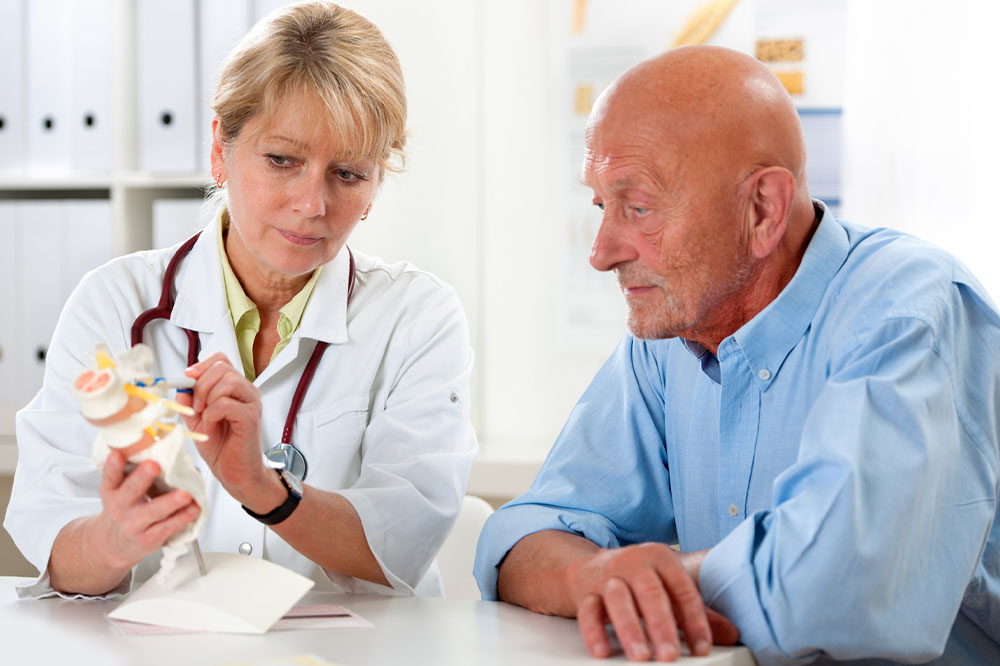
Spinal stenosis – Causes, symptoms, interventions
The spine is to the body like the bark to a tree – it holds the body upright and facilitates its structure. Thus, problems with the spinal cord can pose several challenges, from restricted mobility to difficulties with basic daily activities. Spinal stenosis is a health condition involving pressure on the spinal cord due to lack of space within the backbone. This article provides an insight into spinal stenosis, its causes, symptoms, and treatment options.
Causes of spinal stenosis
Arthritis
Arthritis typically causes wear and tear of the spine over time, which can trigger the onset of spinal stenosis. Individuals with osteoarthritis and rheumatoid arthritis are at a higher risk of developing spinal stenosis than patients with other types of arthritis.
Spinal trauma or injury
Spinal injuries or trauma caused by accidents or while playing sports can also cause spinal stenosis.
Spinal tumors
Spinal tumors that grow in the space between the spinal cord and vertebrae can cause excessive pressure on the nerves and reduce the space in the spinal canal. This condition can increase one’s risk of spinal stenosis.
Paget’s disease
Paget’s disease refers to the abnormally rapid growth of new bones in the body, causing bone weakening and deformities. In many cases, Paget’s disease may affect the spine and cause the onset of spinal stenosis.
Aging
With age, the bones in one’s spine may thicken and enlarge, increasing one’s vulnerability to spinal stenosis.
Signs and symptoms of spinal stenosis
Problems with balance
The compression of the spinal cord causes nerve dysfunction; consequently, nerve signals cannot travel optimally from the brain to the feet, causing issues with balance.
Bowel problems
Spinal stenosis typically affects the nerves regulating one’s lower colon, which is responsible for excretion. Consequently, individuals with the condition may experience bowel accidents or constipation.
Tingling sensation in the legs
If spinal stenosis affects the sciatic nerve, one may experience numbness or a tingling sensation in one’s legs, a condition called sciatica.
Treatment options
Physiotherapy
Physiotherapists help patients with spinal stenosis regain spine strength and body mobility. Physiotherapy can also help improve one’s balance and reduce the pressure exerted on the nerves.
Laminectomy
This type of surgery involves the removal of the lamina, the part of the spine that supports the back of the spinal cord. Removing the lamina allows for more space for the nerves and spinal cord and helps manage spinal stenosis symptoms.
Spinal fusion
Spinal fusion is a surgical procedure to fuse two vertebrae. The process involves performing a laminectomy, after which the lamina removed is used to join the vertebrae and enhance spine strength. The vertebrae are joined together with tools like rods, hooks, and screws, and the fusion process takes approximately a year to be completed.
Percutaneous image-guided lumbar decompression
This procedure, known as PILD, is specifically used for patients with lumbar spinal stenosis stemming from the thickening of a ligament behind the spine. It involves a small incision and is performed with the help of an X-ray. Since the recovery is quick, one is typically discharged within two hours after the procedure. It is often followed by physiotherapy, which helps with spine strength.
Foods that patients with spinal stenosis should have
Fatty fish
Fatty fish varieties, such as salmon, mackerel, and tuna, are high in omega-3 fatty acids, which are anti-inflammatory and can help heal from spinal problems like spinal stenosis.
Dark leafy greens
Dark leafy green vegetables like spinach, kale, and broccoli contain essential vitamins, such as vitamins A, C, E, and K, which can ensure healthy spine tissues and bones and help individuals with spinal stenosis manage their symptoms.
Avocados
Avocados are rich in fiber and potassium, which are vital for bone and spine health. Moreover, avocados have anti-inflammatory properties and can contribute to recovering from spinal stenosis and other spine-related conditions.
Orange-colored fruits and vegetables
Orange-colored fruits like papayas, carrots, and oranges contain omega-3 fatty acids, calcium, and vitamins A and C, which can reduce back pain and discomfort associated with spinal stenosis.
Dairy
If one is not lactose intolerant, dairy products are excellent ways to boost one’s protein and calcium intake. Calcium is required by the body for strong bones and can help boost spinal strength when one is healing from spinal stenosis. Dairy products should be taken alongside vitamin D-rich foods like egg yolks, which can help absorb calcium optimally.
Berries
Berries are rich sources of resveratrol, an element that contributes to the reduction of oxidative stress and helps the body heal steadily following spinal injuries. They also contain antioxidants, which protect the central nervous system from further damage.




